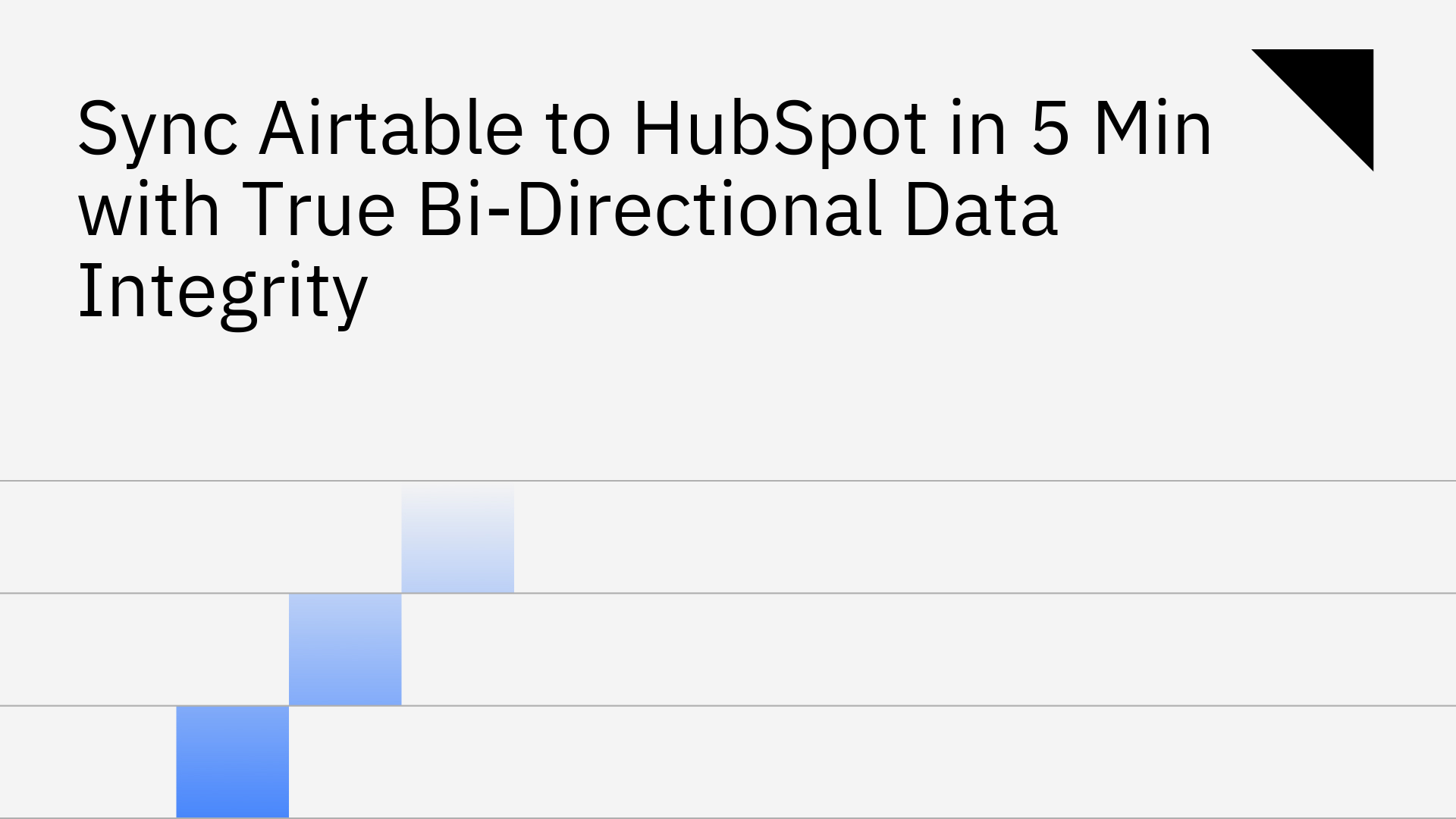
Modern businesses often rely on Airtable as a flexible spreadsheet-database hybrid for workflows such as lead management, project tracking, and data collection. At the same time, many teams use HubSpot’s CRM for contact management, deal tracking, and marketing automation (https://www.hubspot.com/products).
The challenge? Keeping customer and operational data consistent between Airtable and HubSpot. Manual transfers, one-way sync tools, and CSV exports introduce bottlenecks, errors, and costly delays.
The solution is true bi-directional synchronization with data integrity. Stacksync enables a seamless Airtable–HubSpot sync where every change is captured in real time, conflicts are resolved intelligently, and data stays accurate across both systems.
When Airtable and HubSpot run in silos, operational inefficiencies compound:
Leads stored in Airtable quickly get out of sync with HubSpot’s CRM. Fragmentation leads to outdated records, duplicate outreach, and inconsistent customer experiences. Data synchronization ensures records remain accurate and uniform across systems (https://www.beehexa.com/blog/what-is-data-synchronization/).
Exporting/importing CSVs between Airtable and HubSpot drains resources and introduces human error. As data volume grows, this process becomes unsustainable—consuming hours weekly that could otherwise drive revenue.
When leads captured in Airtable don’t appear instantly in HubSpot, sales teams can’t respond to hot prospects. Even short delays negatively impact conversion rates and revenue.
Without live sync, workflow automation breaks. A deal stage updated in HubSpot may not trigger a project task in Airtable, disrupting operational flow. True bi-directional sync removes these barriers.
Certain scenarios benefit most from real-time Airtable–HubSpot data integrity:
Stacksync makes integration fast and reliable. Setup typically takes minutes, not months:
Stacksync goes beyond record sync:
Stacksync’s architecture ensures data integrity and reliability:
While ETL and ELT support analytics, real-time synchronization powers operational workflows:
Case Study: A growing enterprise unified Airtable–HubSpot data with Stacksync in minutes, eliminating manual entry and achieving real-time accuracy—boosting sales response and operational efficiency.
If your teams juggle Airtable’s flexibility with HubSpot’s CRM power, true bi-directional data integrity is no longer optional—it’s essential.
Stacksync delivers enterprise-grade Airtable–HubSpot synchronization with real-time accuracy, conflict resolution, and compliance. In just 5 minutes, you can unify workflows, empower teams, and scale operations with confidence.
👉 Start your free 14-day trial today and experience Airtable–HubSpot sync with true data integrity.
Can you sync Airtable with HubSpot automatically?
Yes. With Stacksync, Airtable and HubSpot sync automatically in real time, ensuring true bi-directional data integrity without manual effort.
Does Airtable support bi-directional sync with HubSpot?
Airtable does not provide native two-way synchronization. Stacksync enables true Airtable–HubSpot data integrity, meaning updates remain accurate and consistent across both systems.
How long does it take to set up Airtable–HubSpot sync with Stacksync?
Most teams can configure and activate sync in under 5 minutes with Stacksync’s secure authentication and conflict resolution engine.
What are the benefits of syncing Airtable with HubSpot?
Is Stacksync secure for CRM integrations?
Yes. Stacksync is enterprise-ready with SOC 2 Type II, GDPR, HIPAA, and ISO 27001 compliance. Data is encrypted in transit and at rest, with no persistent storage.